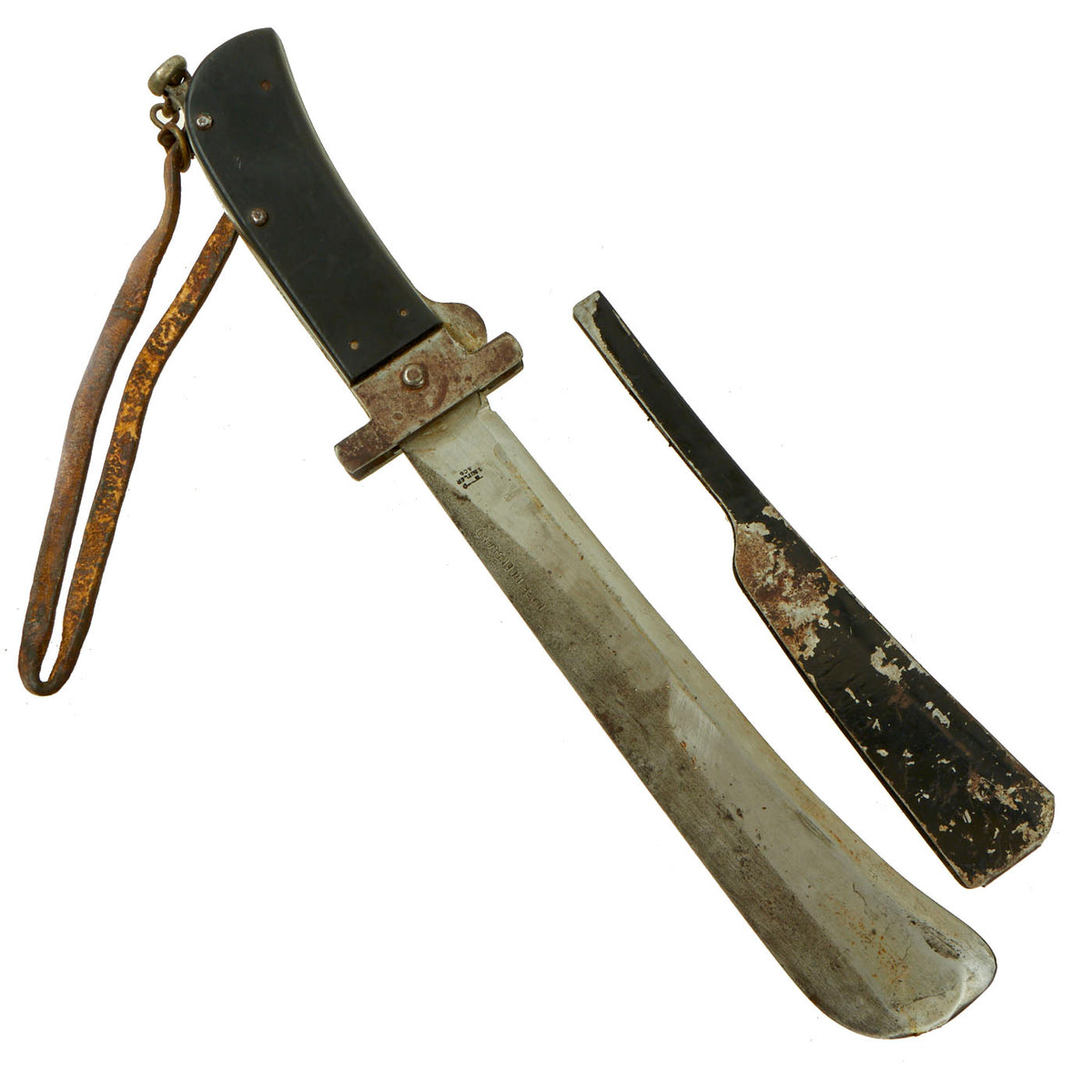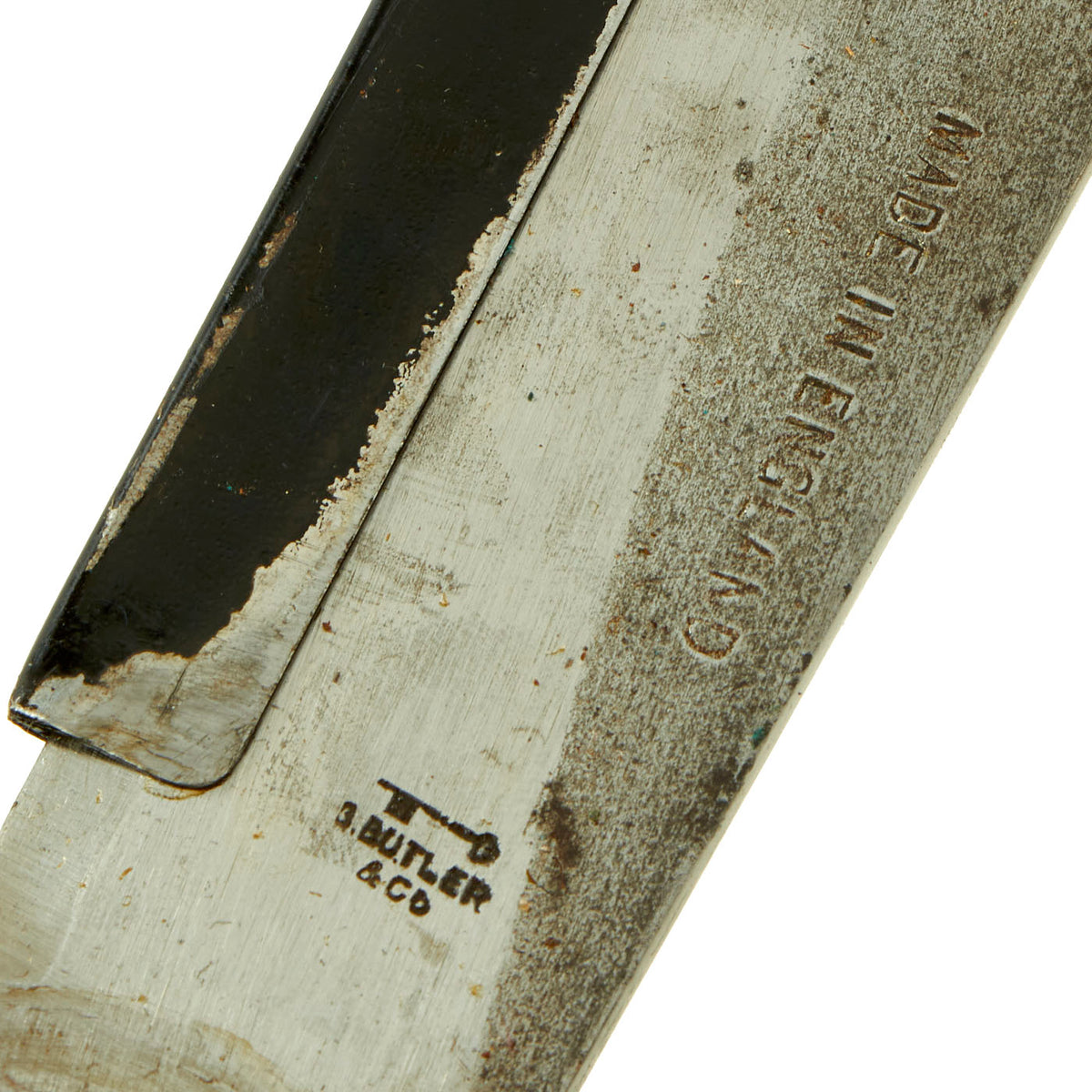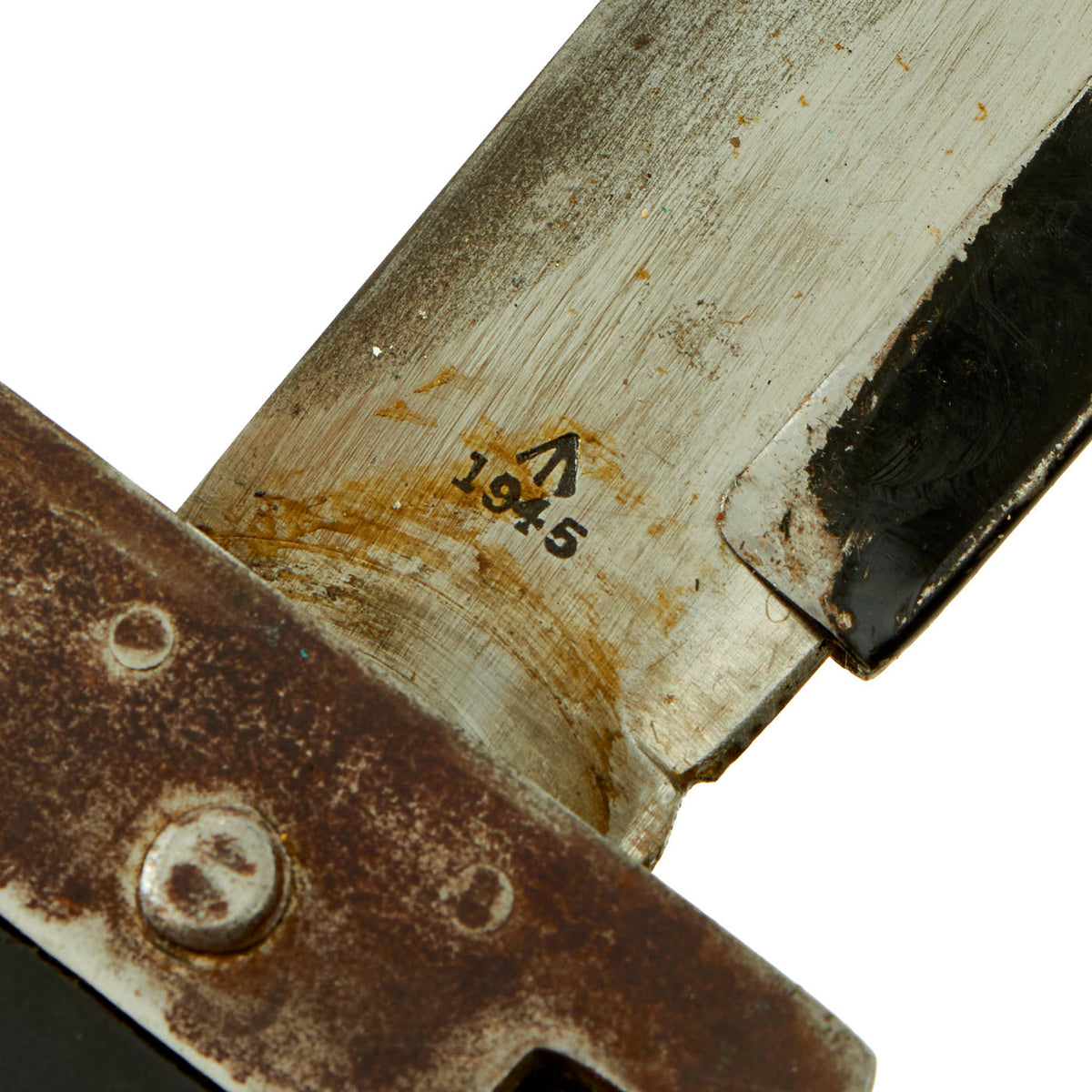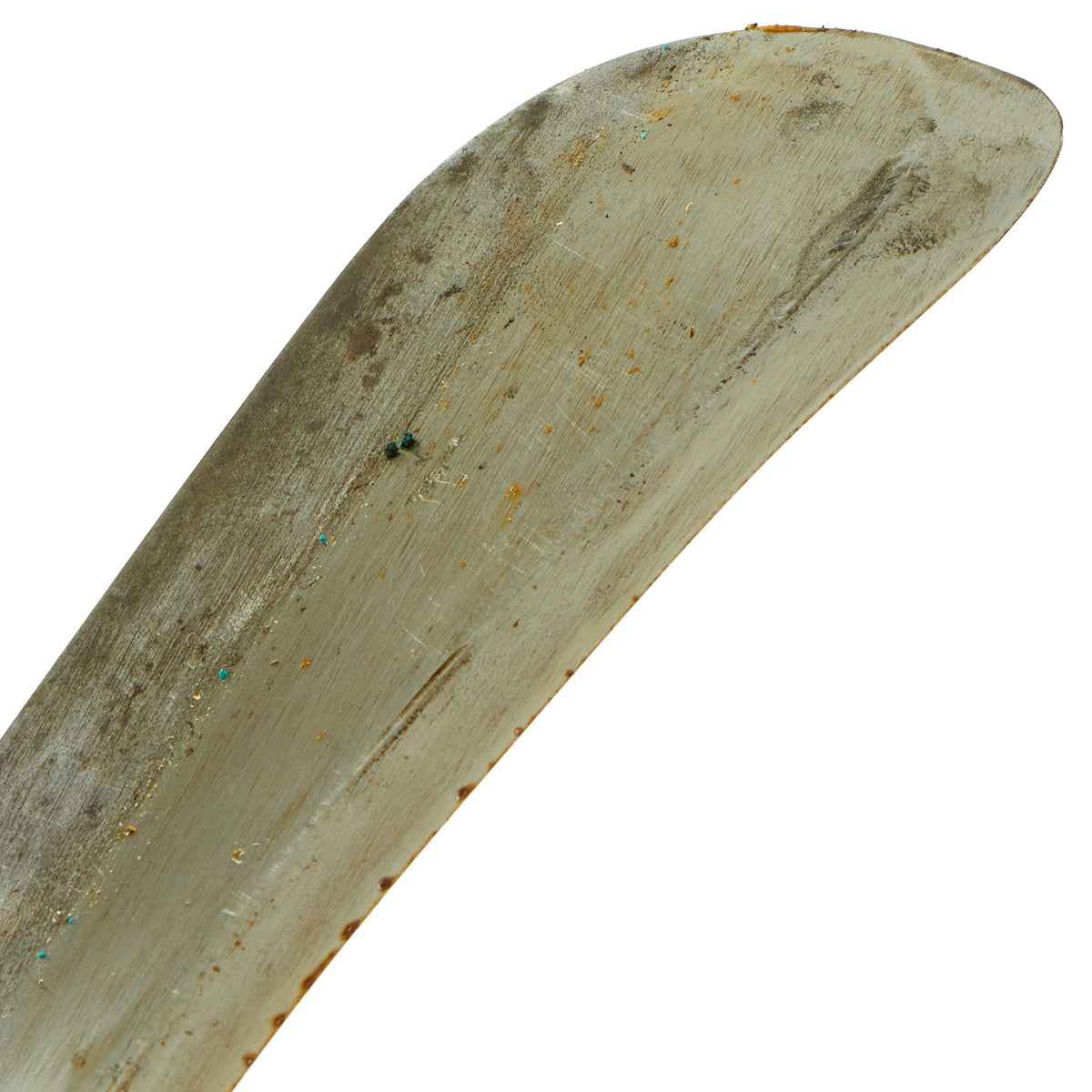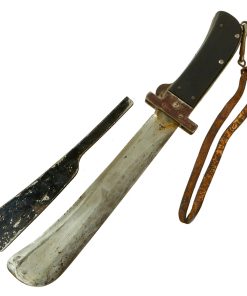Original British WWII R.A.F. Airmen’s Folding Survival Machete by Butler with Rare Blade Guard – dated 1945 Original Items
$ 225,00 $ 90,00
Original Item: Only One Available. In 1942, the U.S. Army Air Force adopted a Folding Machete for use in the B-2 and B-4 Bail out kits. This machete was designed to replace the Model 18 Collins machete, which took up a lot of space in the emergency kits. The folding machete is only 11 inches long when folded up.
The British Royal Air Force saw the utility of this, and decided to copy the design for their own emergency kits. They made only one change: the addition of a loop to the bottom where a hand strap could be attached, which this example still has.
All of the examples that we have been able to find online were marked by the same company under a “Key” logo: G. BUTLER / & CO., a maker in Sheffield England mostly known for making folding pocket knives. As the survival machete is for all purposes an oversized pocket knife, the choice of contractor made sense. The blade is also marked MADE IN ENGLAND on one side, and the other side has a BROAD ARROW over 1945, indicating military acceptance in that year.
This example is in very good used condition, and still retains the blade cover, which was often lost. The blade and handle show staining and light corrosion from 70 years of age and use, but it is otherwise in very good condition. The grip is in fine condition, and has not been altered in shape. The locking mechanism works correctly, and the machete folds up as designed. The blade does not appear to have been sharpened much after the factory, and still retains the original shape. It has some light oxidation where it was unprotected by the blade guard and handle.
A very nice example with a lovely patina. Fully functional and ready to display!
Specifications:
Blade Length: 10″
Blade Style: Forward Curved Single Edged Machete
Overall length: 15 1/2“
Crossguard: 2 3/4”
Modification of these machetes was actually common, as unfortunately their design left much to be desired by those that used them. The shape of the handle is not especially comfortable. The edges are squared off and cut into the hand over time. The liner lock on the blade was not trusted by the users and was subject to failure. To make matters worse, the blade guard was a separate item and was subject to being lost. However, due to the war, these minor issues would have to wait until after the war to be resolved.
The folding machetes were called “Jungle Knives” by the crews who carried them. Despite their flaws, they did work. In some instances, crew members would reshape the plastic grips to make them more comfortable. However, the other problems remained an issue; especially losing the blade guard.
For the most part, the AAF folding Machetes were issued to crews operating in the South Pacific. However, we have seen accounts of them being used in European theater. We assume this was later in the war when survival kits were becoming more standardized or perhaps when certain Bomber Groups were transferred from the Pacific to Europe.
At this point, the British R.A.F. saw the design, and decided to copy it for their own air crews.
Fast Shipping with Professional Packaging
Thanks to our longstanding association with UPS FedEx DHL, and other major international carriers, we are able to provide a range of shipping options. Our warehouse staff is expertly trained and will wrap your products according to our exact and precise specifications. Prior to shipping, your goods will be thoroughly examined and securely secured. We ship to thousands clients each day across multiple countries. This shows how we're dedicated to be the largest retailer on the internet. Warehouses and distribution centres can be located throughout Europe as well as the USA.
Note: Orders with more than one item will be assigned a processing date depending on the item.
Before shipping before shipping, we'll conduct a thorough inspection of the items you have ordered. Today, the majority of orders will be delivered within 48 hours. The delivery time will be between 3-7 days.
Returns
The stock is dynamic and we cannot completely manage it because multiple stakeholders are involved, including our factory and warehouse. So the actual stock may alter at any time. It's possible that you may not receive your order once the order has been made.
Our policy is valid for a period of 30 days. If you don't receive the product within 30 days, we are not able to issue a refund or an exchange.
You can only return an item if it is unused and in the same state as the day you received it. You must have the item in its original packaging.
Related products
Uncategorized
Uncategorized
Uncategorized
Armoured Fighting Vehicles of the World: AFVs of World War One (Hardcover Book) New Made Items
Uncategorized
Australian WWII Owen MK1 Machine Carbine SMG Custom Fabricated Replica with Sling Original Items
Uncategorized
Uncategorized
Uncategorized
Uncategorized
Uncategorized
Band of Brothers ORIGINAL GERMAN WWII Le. F.H. 18 10.5cm ARTILLERY PIECE Original Items
Uncategorized
Uncategorized
Uncategorized
Uncategorized
Uncategorized
Armored Burgonet Helmet & Polearm from Scottish Castle Leith Hall Circa 1700 Original Items
Uncategorized
Uncategorized
Uncategorized
Uncategorized
Uncategorized
Uncategorized
Angolan Rebel 1970s era 60mm Inert Display Mortar from Angolan Civil War Original Items

